With a history spanning 4,000 years, the Eastern horoscope has become immensely popular worldwide. Its fundamental concept is to divide time into 12 annual cycles, each represented by a specific animal. These zodiac signs are associated with a unique set of qualities that are believed to influence a person’s destiny based on their date of birth.
Zodiac signs by years: table
We also have some interesting articles for you to read:
When reading your horoscope, it is helpful to focus on the year and discover the Eastern predictions that are associated with it. By following the links, you can learn more valuable information about yourself and your loved ones. By combining the data from both horoscopes, you can create a more comprehensive astrological forecast for the zodiac signs and determine their specific strengths and weaknesses.

Eastern horoscope of the zodiac signs based on year of birth
People born in 1912, 1924, 1936, 1948, 1960, 1972, 1984, 1996, 2008, 2020, or 2032 fall under the first sign of the Eastern zodiac.
Those born in 1913, 1925, 1937, 1949, 1961, 1973, 1985, 1997, 2009, 2021, or 2033 belong to the second zodiac sign.
The third zodiac sign is for individuals born in 1914, 1926, 1938, 1950, 1962, 1974, 1986, 1998, 2010, 2022, or 2034.
Those born in 1915, 1927, 1939, 1951, 1963, 1975, 1987, 1999, 2011, 2023, or 2035 fall under the fourth zodiac sign.
People born in 1916, 1928, 1940, 1952, 1964, 1976, 1988, 2000, 2012, 2024, or 2036 belong to the fifth zodiac sign.
The sixth zodiac sign is for individuals born in 1917, 1929, 1941, 1953, 1965, 1977, 1989, 2001, 2013, 2025, or 2037.
Those born in 1918, 1930, 1942, 1954, 1966, 1978, 1990, 2002, 2014, 2026, or 2038 fall under the seventh zodiac sign.
People born in 1919, 1931, 1943, 1955, 1967, 1979, 1991, 2003, 2015, 2027, or 2039 belong to the eighth zodiac sign.
The ninth zodiac sign is for individuals born in 1920, 1932, 1944, 1956, 1968, 1980, 1992, 2004, 2016, 2028, or 2040.
Those born in 1921, 1933, 1945, 1957, 1969, 1981, 1993, 2005, 2017, 2029, or 2041 fall under the tenth zodiac sign.
People born in 1922, 1934, 1946, 1958, 1970, 1982, 1994, 2006, 2018, 2030, or 2042 belong to the eleventh zodiac sign.
1923, 1935, 1947, 1959, 1971, 1983, 1995, 2007, 2019, 2031, 2043
The Eastern horoscope is often seen as the Chinese equivalent of the zodiac horoscope, but it is different in that it is based on the year of birth rather than the month. It is believed that the horoscope was invented by Chinese Emperor Huang-di in 2600 BC.
There are three cycles in Chinese philosophy, but the most popular one is the 12-year cycle where each year is associated with a specific animal. These animals were not chosen randomly.
A skilled tarot reader can provide answers to questions such as:
What does the future hold for you? How will your relationships turn out? What is the best decision to make?

Chinese zodiac by year
Year of the Rat

People born under the sign of the Rat possess a captivating charm, attractive appearance, and an enigmatic allure. They effortlessly become popular figures in any social circle and have the ability to please everyone. The Rat is always focused on personal gain, which is why they carefully consider the consequences of their actions and display caution and pragmatism.
These individuals are intelligent and perceptive. Naturally, they possess a fair share of cunning and calculation. However, they also place great value on their possessions, possess the ability to save and grow their wealth. You can confide in a Rat without hesitation, as they are not prone to gossip and are skilled at keeping secrets.
The Rat is a cautious creature when it comes to work. They always take the time to observe and analyze from a distance before diving in. They are strategic thinkers who approach tasks with a relaxed and methodical attitude. Their hardworking nature allows them to successfully tackle even the most challenging of tasks.
Year of the Ox
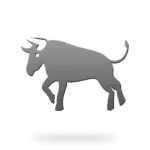
The bull is a person of great strength and power, exuding an air of magnificence. The horoscope bestows upon them qualities of diligence, determination, and an immense amount of patience. These attributes enable them to navigate towards their goals with purpose and determination. Bulls are independent thinkers, preferring to stand firmly on their own two feet. They are not easily swayed and tend to hold steadfast to their positions and beliefs.
People are naturally drawn to Bulls because they perceive them as serious and stable individuals. Furthermore, Bulls are known for their kindness and generosity, always willing to lend a helping hand and assist in times of difficulty. Their hearts are filled with compassion and empathy. Bulls are traditionalists, finding it challenging to embrace change and incorporate transformations into their lives.
The Tiger Year
(1926, 1938, 1950, 1962, 1974, 1986, 1998, 2010, 2022)
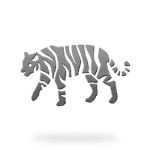
The Tiger astonishes with its courage, strength, and audacious demeanor. Individuals of this sign are always aligned with fairness and strive for it in all aspects of life. The Tiger pursues specific ideals and is prepared to defend principles until the end. If necessary, they will fearlessly confront the entire world.
This is a wise and prudent individual, capable of accomplishing much and extracting the utmost from fate. However, in their personal life, strong jealousy and occasionally erratic behavior may manifest. The Tiger is incredibly passionate, therefore they are prepared for various feats, grand gestures, and may appear demanding to both themselves and their significant other.
Having extreme ambition enables you to accomplish a great deal, but at times hinders your progress. The tiger yearns for power, refuses to make compromises, and has no intention of giving in or appeasing anyone.
Year of the Rabbit or Cat

Legend has it that these 12 animals were selected for the eastern horoscope because they were the ones who came to bid farewell to the Buddha. The fourth one to appear was the Rabbit, although in some variations it is referred to as the Cat. As a result, they were simply combined into one year.
The Rabbit (Cat) is known for its high level of intelligence and understanding of social etiquette. This individual excels in society and possesses refined manners. They are active individuals who have a deep understanding of people and avoid conflicts. They often become exemplary and loving family members, valuing tradition and rituals. Family always comes first for them, as their relatives serve as their motivation for action. They are caring, kind, and attentive individuals who are willing to give everything for the happiness of their loved ones.
The Year of the Dragon

It may be difficult to fathom that it was actually the Dragon that came to pay homage to the Buddha, as these creatures are often regarded as mythical. However, there are still some who believe in their existence in ancient times, as they are mentioned in numerous legends. In Chinese culture, the dragon represents protection and is seen as a guardian against dark forces.
If you were born in the year of the Dragon, you possess an immense reserve of energy and strong endurance. Even in the most challenging and heated situations, you remain composed. Your health is robust and you have a remarkable strength of will. You take great pride in your reputation and will go to great lengths to uphold your good name.
An expert tarot reader will provide answers to your inquiries:
What lies ahead for you in the future? How will your relationships pan out? What is the optimal choice to make?

The Snake’s Year


Snakes possess remarkable intuition, making it essential to heed your inner voice. They exhibit cautious behavior, allowing them to assess and control any situation. At first glance, they may appear dangerous and enigmatic. However, this perception is misleading due to their cautious and secretive nature.
The Snake’s character is characterized by endurance, patience, and the ability to replenish energy reserves. They are not aggressive and rarely initiate conflicts. Snakes are admired for their ability to achieve their goals. They do not give up in the face of challenges and are willing to go the distance, ultimately leading to their success.
The Year of the Horse

In the realm of the eastern zodiac, the Horse stands out as the most radiant and optimistic sign, embodying an abundance of positive qualities. It appears as though individuals born under this sign are destined to revel in the pleasures of life. They effortlessly forge ahead, oblivious to any obstacles that may come their way. They hold freedom dear and make a conscious effort to never confine themselves to societal norms.
These individuals view the world through the lens of an optimist, allowing them to maintain a perpetually happy, content, and energetic disposition. Their exuberance attracts people towards them, as they exude positivity. This optimistic outlook extends to their romantic and familial relationships as well. Furthermore, those born under the Horse sign possess an innate ability to intuitively grasp the emotions of their partners, enabling them to understand their needs and fulfill them effectively. Infidelity is a rarity, as they place great importance on cultivating strong and lasting bonds.
The Year of the Goat (also known as the Year of the Sheep)
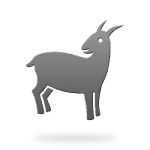
Individuals born in these years are governed by the Goat, Sheep, or Ram. They possess an appealing appearance and innate charisma. These individuals are highly imaginative and include a significant number of talented creators. Their destiny lies in the performing arts, whether it be on stage, in film and theater, or through the creation of awe-inspiring paintings and sculptures.
These individuals thrive in the spotlight as they are the life of the party and possess the ability to uplift others. They are known for their sociability, tactfulness, and delightful sense of humor. However, it should be noted that Goats can be obstinate, often refusing to back down when necessary.

The Monkey is known for its sociability, cunning, guile, and inquisitiveness. While it may appear to be simple-minded to outsiders, it is far from that. These individuals are highly intelligent and have a vivid imagination, which can make their behavior extremely unpredictable.
They possess a heightened level of endurance and ambition. However, their character is also marked by cheerfulness, which allows them to attract a large number of loyal friends. Spending time with a Monkey is never boring, as they are engaging storytellers and attentive listeners. However, their behavior can be fickle at times. Additionally, they are not above lying if it benefits them.
The Rooster’s Year
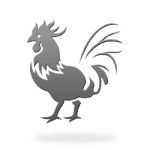
The Rooster zodiac sign has always been known as a maverick and a trailblazer, someone who values being a leader and staying ahead of the pack. They are an active and lively individual who takes initiative and strives for superiority in all aspects of their life. Their ambition drives them to gladly take on the role of a leader.
Roosters are hard workers who always see their tasks through to completion. They have a strong sense of responsibility and diligence, which motivates them to do their best in everything they undertake. They possess qualities of excitement, perseverance, determination, and reliability.
Roosters present themselves with a friendly and open demeanor, which allows them to easily integrate into new social groups and become everyone’s favorite. They naturally attract attention and are often the center of attention in their circle of acquaintances.
The Year of the Dog

The Dog sign in the eastern zodiac is known for its selflessness, patience, activeness, generosity, and strong determination. They are home-loving individuals who cherish the warmth and comfort of their families.
The Dog is always vigilant for justice, and thus, this sign is willing to go to great lengths to defend principles and ideals. They are quick to stand up for the weak and are always ready to lend a helping hand or a listening ear.
These individuals are wise and possess a logical mind, allowing them to navigate through even the most complex and hopeless situations. They are romantics at heart and tend to idealize their partners. The Dog firmly believes in its own ideals and may feel disappointed if they are not supported by society.
The Year of the Boar, Pig
The Year of the Boar, Pig is a special year in the Chinese zodiac. In Chinese culture, the pig is considered a symbol of wealth and good fortune. People born in the Year of the Boar, Pig are believed to possess qualities such as honesty, generosity, and loyalty.
During the Year of the Boar, Pig, many people celebrate with traditional customs and festivities. It is a time for family gatherings, feasting, and exchanging gifts. People also engage in activities such as lion and dragon dances, fireworks, and temple visits.
In Chinese astrology, each year is associated with one of the 12 animals in the zodiac cycle. The Year of the Boar, Pig is the twelfth and final animal in the cycle. It is said that those born in this year are likely to be kind-hearted, hardworking, and enjoy the simple pleasures in life.
In conclusion, the Year of the Boar, Pig is a time of celebration and reflection. It is a year to embrace the qualities of the pig and welcome good fortune into our lives.
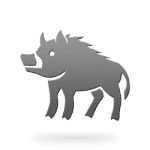
Here we have the final animal in the eastern zodiac based on birth dates. The pig is known for its sociability, honesty, and generosity. This individual makes a wonderful friend and partner who will never betray.
The pig is a peaceful person who strives to understand others and never initiates conflicts. Their communicability and flexibility allow them to find common ground with any person, so even in an unfamiliar group, this sign will feel right at home.
These individuals are thrifty and have the ability to not only earn a decent income but also to grow their savings. It sometimes feels like the pig attracts money to itself, making them excellent entrepreneurs.
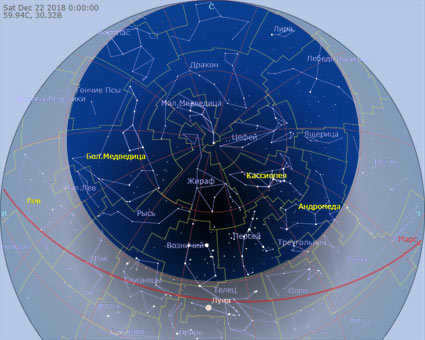
Internet planetarium
Figure 2. Chart displaying the constellation patterns above St. Petersburg – for a closer look, simply select the “Expand” icon located in the top right corner. Additionally, you have the ability to modify the time and geographic coordinates of the region by accessing the options in the top left corner of the chart.
In regions with moderate and tropical latitudes, there exists a cluster of constellations that are not present, eliminating the need to determine their order. However, in regions with numerous constellations, it is logical to individually list them in a counterclockwise order along the plane of the celestial equator, as observed by astronomers. In this scenario, the most practical reference line is not the prime meridian, but rather the line that passes through Polaris, Dubhe, and Merak of the Big Dipper (Fig. 3). If these stars are difficult to distinguish due to atmospheric conditions, then visibility in that particular sky will be limited.
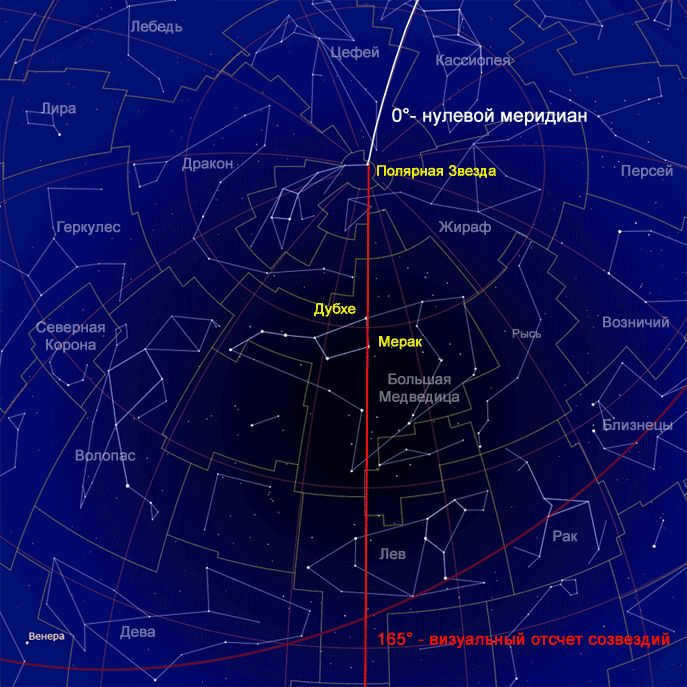
Fig.3. The starry sky, the zero meridian (white), and the line indicating the beginning of visual counting of constellations (red). This line serves as the best way to locate Polaris and the Little Bear.
Directly south of the non-setting constellations are partially setting constellations, where at least one of their stars falls within the circumpolar circle of non-setting stars.
There are 19 partially setting constellations in the sky of St. Petersburg (counting clockwise):
1. The Big Dipper;
2. The Lion;
3. Little Leo;
4. Veronica’s hair;
5. Hound Dogs;
6. Wolfhounds;
7. Northern Crown;
8. Hercules;
9. Lyra;
10. Swan;
11. Andromeda;
12. Pegasus;
13. Pisces;
14. Triangle;
15. Aries;
16. Taurus;
17. Ascendant;
18. Gemini;
19. Cancer.
Continuing further to the southern direction, one can observe a series of constellations that are fully visible within the boundaries set by the International Astronomical Union.
Located above St. Petersburg, there are a total of 20 constellations in this region, including:
1. Sextant;
2. Bowl;
3. Virgo;
4. Raven;
5. Libra;
6. Snake;
7. Serpentine;
8. Shield;
9. Eagle;
10. Arrow;
11. Fox;
12. Capricorn;
13. Dolphin;
14. Aquarius;
15. M. Horse;
16. Whale;
17. Orion;
18. Hare;
19. Unicorn;
20. M. Dog.
There are constellations that can be partially seen at the southernmost horizon, where at least one star sometimes becomes visible from behind the horizon.
Throughout the year, the starry sky of St. Petersburg offers a sight of 16 partially visible constellations:
1. Hydra;
2. Compass;
3. Pump;
4. Centaurus;
5. Wolf;
6. Scorpion;
7. Sagittarius;
8. Microscope;
9. Southern Fish;
10. Eridanus;
11. Furnace;
12. Sculptor;
13. Chisel;
14. Dove;
15. Feed;
16. Bol.Dog.
In total, the St. Petersburg sky offers stars from 63 constellations! To easily check for the presence or absence of constellations, an alphabetical list of constellations visible in the sky of St. Petersburg would be quite appropriate:
Andromeda, Gemini, Ursa Major, Canis Major, Libra, Aquarius, Aquarius, Ascendant, Wolf, Wolves, Wolopassus, Veronica’s Hair, Raven, Hercules, Hydra, Dove, Hound Dogs, Virgo, Dolphin, Dragon, Unicorn, Giraffe, Hare, Serpent, Snake, Cassiopeia, Whale, Capricorn, Compass, Corma, Swan, Leo, Lyra, Fox, M. Horse, M. Dog, Little Leo, Little Bear, Microscope, Pump, Aries, Eagle, Orion, Pegasus, Perseus, Furnace, Cancer, Incisor, Pisces, Lynx, Northern Crown, Sextant, Scorpio, Sculptor, Sagittarius, Sagittarius, Taurus, Triangle, Centaurus, Cepheus, Cup, Shield, Eridanus, Southern Fish, Lizard
Another unique aspect of the night sky over St. Petersburg is the group of constellations that can be seen directly overhead at midnight. (the optimal conditions for visual observation):
From January 9 to January 23, you can observe the Giraffe constellation. From January 23 to April 29, the Big Dipper will be visible. The Dragon constellation will be visible from April 29 to July 20. From July 20 to August 1, you can spot the Swan constellation. From August 1 to September 10, the Cepheus constellation will be visible. September 10 through October 11 is the time to observe the Cassiopeia constellation. From October 11 to December 26, the Giraffe constellation will be visible again. From December 26 to January 9, you can spot the Lynx constellation.
A total of 7 constellations pass through the zenith.
Explore the Starry Sky above St. Petersburg
Experience a Mini Planetarium Online
Discover the Map of the Starry Sky. Explore the Borders and Names of Constellations Visible at the Latitude of St. Petersburg
Use Hot Keys to Control the Online Map of the Starry Sky:
(Interact with the Cursor on the Map and Utilize the Latin Keyboard Layout)
- a → Toggle Haze (Atmospheric Simulation On/Off)
- g → Adjust Horizon
- h → Select Map View
- i → Invert Colors
- , → Show Ecliptic
- ; → Draw Meridian Line
- e → Show Equatorial Grid
- z → Show Azimuthal Grid
- m → Show Galactic Grid
- M → Show Milky Way Boundaries
- q → Hide the Sides of the World
- s → Hide Stars
- S → Hide Star Names
- u → conceal the names of celestial bodies
- p → hide celestial bodies and the Sun
- o → display the paths of planets
- c → show diagrams of constellations
- v → hide the names of constellations
- b → hide the boundaries of constellations
- R → show the radiants of meteor showers
- 8 → set the current time
- j → decrease the speed of time
- k → pause time
- l → increase the speed of the countdown
- – → go back one day
- = → go forward one day
- [ → go back one week
- ] → go forward one week
- % → rotate counterclockwise
- ‘ → rotate clockwise
- & → show faint stars
- ( → hide faint stars
Show this list on the star map or ?
Sergey Ov ( Seosnews9 )
25.05. 2018 – Work on this page will continue:
Abstracts:
– Constellations passing through the zenith ✔
– Constellations, asterisms and seasons
– A panorama map of the entire part of the starry sky available for viewing from St. Petersburg.
* At the same latitude, the appearance of the starry sky is generally similar. However, there may be slight variations in latitude of 1-2 degrees. For example, the sky in St. Petersburg will have a similar look to cities such as Volkhov, Oslo, Stockholm, Tallinn, and Helsinki. To ensure an exact match between the virtual map and the real sky, simply enter the time correction or coordinates of the corresponding city in the upper left corner of the star map.
Regional star maps are specifically designed for major cities and popular resort destinations.
Moscow: Online Mini Planetarium – Explore the Starry Sky over Moscow
St. Petersburg: Web Planetarium – Discover the Starry Sky of St. Petersburg
Nizhny Novgorod: Online Planetarium – Explore the Starry Sky of Nizhny Novgorod
Novosibirsk: Online Planetarium – Discover the Starry Sky over Novosibirsk
Yekaterinburg: Web-Planetarium – Interactive Map of the Starry Sky above Yekaterinburg
Kazan: Planetarium with Online Settings – Explore the Starry Sky over Kazan
Krasnodar: JavaScript Planetarium – Discover the Starry Sky of Krasnodar
Samara: Online Planetarium – Explore the Starry Sky over Samara
Krasnoyarsk: JavaScript Planetarium – Discover the Starry Sky over Krasnoyarsk
Chelyabinsk: JS Planetarium – Interactive Map of the Starry Sky above Chelyabinsk
Omsk: Online Constellation Calculation – Explore the Starry Sky above Omsk
Perm: Online Constellation Chart Calculation – Discover the Starry Sky above Perm
Voronezh: Online Constellation Mapping – Explore the Starry Sky over Voronezh
Murmansk: Map of the starry sky above Murmansk – virtual planetarium
Vladivostok: Map of the starry sky above Vladivostok – Java Script Planetarium
Petropavlovsk-Kamchatsky: Map of the starry sky above Petropavlovsk-Kamchatsky – online planetarium
Sochi: Starry sky map above Sochi – online planetarium software
Crimea: Starry sky map above Crimea – online planetarium
There are plans to develop pages for the following cities: Chelyabinsk, Omsk, Rostov-on-Don, Ufa, Perm, Voronezh, Volgograd, Saratov, Kaliningrad, Sevastopol, Tyumen.
Pages for “Starry sky” have been created for Chelyabinsk, Omsk, Perm, and Voronezh.
Interactive map of the starry sky for a specific area and time:
Many of you may have observed the night sky and the stars. Several centuries ago, individuals began to take notice of these “points of light” forming a specific pattern, sparking curiosity. The stars appeared in the same positions and maintained consistent shapes day after day. Over the course of centuries, people have dedicated themselves to studying constellations, leaving only a few stars shrouded in mystery.
A celestial constellation is a collection of stars that form a distinct shape. In ancient times, these shapes were believed to represent mythical creatures. It was humans who assigned names to certain constellations, which continue to be recognized in the modern world.
Top 5 Iconic Constellations in the Night Sky
The night sky is adorned with a multitude of constellations, each holding a unique meaning and captivating our imagination. Amongst the vast cosmos, here are five of the most renowned constellations:
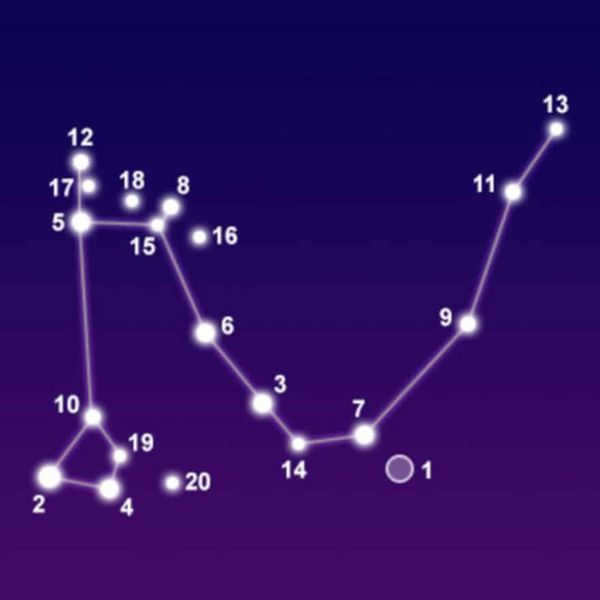
- The Dragon. One of the largest constellations. Its size is truly astonishing. The constellation can be found in the Northern Hemisphere, situated between the Big and Little Bears, but unfortunately it is quite challenging to observe. The stars that form the Dragon are not particularly bright, their light is faint and dim. The best time to see the Dragon is during the summer and fall months, from May to December. The origin story is told in various myths and legends, and one popular version suggests that a wild and ferocious monster desired to challenge the Olympian gods. The goddess Athena, however, did not forgive him and cast him into the sky, where he chose to remain.
2. Cepheus. Cepheus is primarily found in the Northern Hemisphere. This constellation is positioned in the form of a non-uniform pentagon, located adjacent to Ursa Minor, making it relatively easy to locate. While there are no stars within Cepheus that emit a strong, vibrant glow, the constellation can still be observed throughout the year in the Russian Federation. What makes Cepheus particularly renowned is the predictions made by scientists, as they suggest that in a thousand years, the North Pole will shift to this constellation.
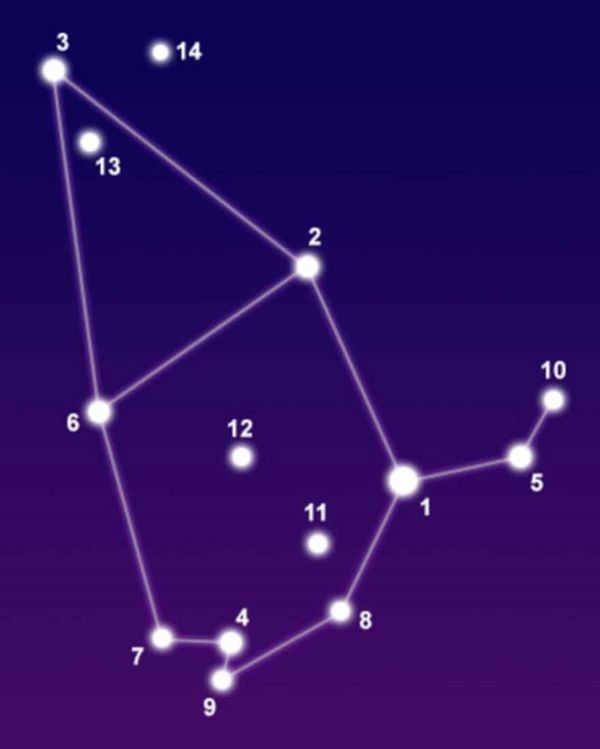

4. Virgo. The location of Virgo is on the equator, situated between Leo and Libra. Its significance lies in the fact that it marks the point of the fall equinox. In ancient atlases, this constellation was often portrayed as a young girl holding a small ear of wheat. Contemporary observers may find it challenging to visualize this image in the night sky, as it requires a vivid imagination and unconventional thinking. To aid in locating Virgo, one can use the first magnitude star Spica, which ranks as the sixteenth brightest star. In total, there are 171 stars that comprise the constellation Virgo. The origin of Virgo is steeped in myth and legend, with one story suggesting that it represents the goddess of justice – Dika. According to the legend, Dika left Earth due to the injustices committed against mankind and now resides in the heavens, embodying the concept of justice.
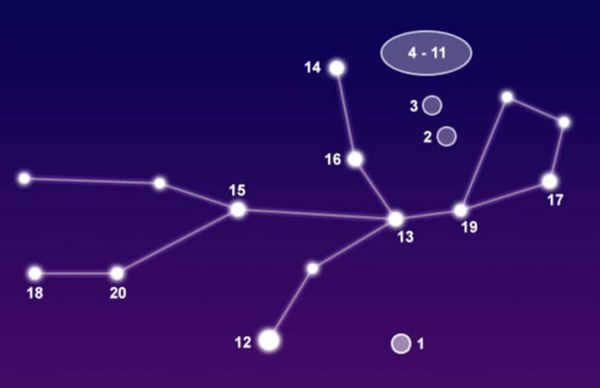
5. Hydra. It is the longest constellation in the night sky. In Russia, it can be observed during late winter and early spring. Only residents of cities in the southern part of the country will have the opportunity to fully appreciate its beauty. With the naked eye or binoculars, one can see 229 stars in Hydra, although they may not have a strong, vibrant brightness. This constellation includes a wide range of well-known stars such as Alpha Hydra, Xi Hydra, and Gamma, as well as numerous small clusters of stars. According to one myth, Hydra represents the Water Serpent that was cast by an angry Apollo. Another version suggests that Hydra symbolizes the arch-nemesis of Heracles, whom he ultimately defeated through his cunning and ingenuity.
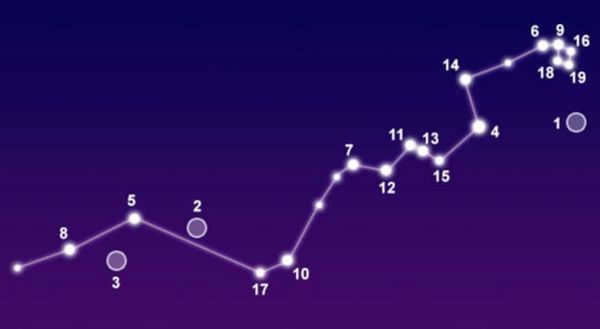
6. Cassiopeia. This constellation can be found in the Northern Hemisphere, and because of its position, people living in the middle latitudes have the opportunity to observe it throughout the year. The best time to see it is in the autumn. It has a resemblance to the letter W in English. There are 90 stars that can be clearly seen in it, but the largest and brightest are only 5. Its name comes from the wife of King Cepheus. Additionally, Cassiopeia is the mother of Andromeda. She was known for her excessive pride, for which she was punished. The punishment she received was being tied to a revolving throne around a pole. Every day, Cassiopeia would be turned upside down.
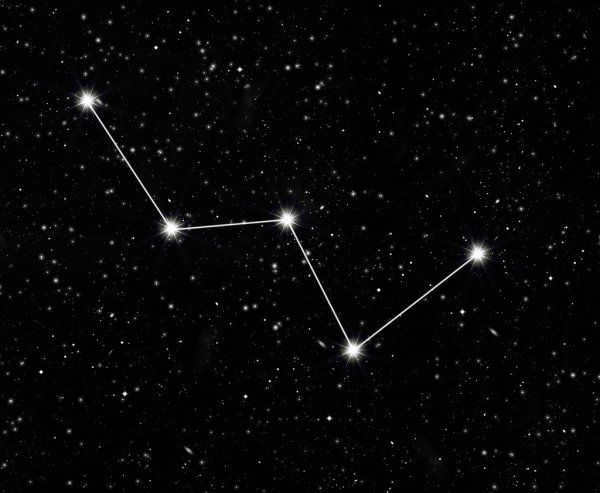
7. Pegasus. Pegasus is a vast constellation situated in the Northern Hemisphere. It comprises of 166 stars, which can be observed without the need for specialized equipment. Late summer and late fall are the optimal times to gaze upon this constellation. Pegasus takes the form of a large square with small appendages resembling tentacles. Those with vivid imaginations will be able to envision the horse in all of its magnificence. According to legend, a drop of blood from the decapitated Medusa Gorgon transformed into a horse. In ancient Greek mythology, Pegasus is depicted as a winged horse capable of soaring through the clouds.
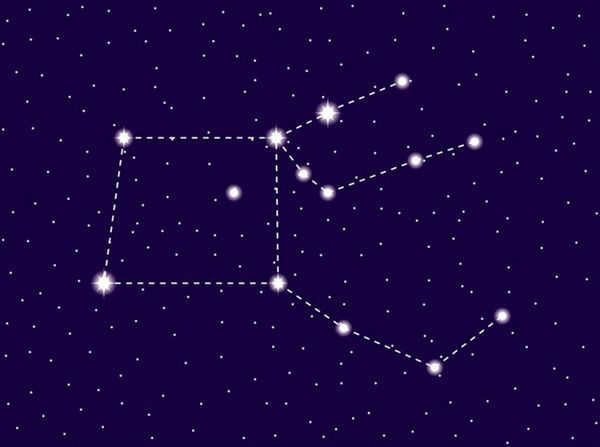
8. Hercules. Situated in the Southern Hemisphere, this star cluster is easily identifiable with all its components clearly visible. In June, residents of the Russian Federation have the opportunity to observe it in its entirety. The shape of Hercules resembles that of a trapezoid, which is quite distinctive. Initially, the constellation was known as “Kneeling,” with descriptions by the famous ancient poet Aratus depicting it as a suffering husband. However, the reasons for this suffering are not mentioned anywhere, and there are no available sources of information on the subject. It was only in the 5th century BC that the constellation was renamed Hercules.
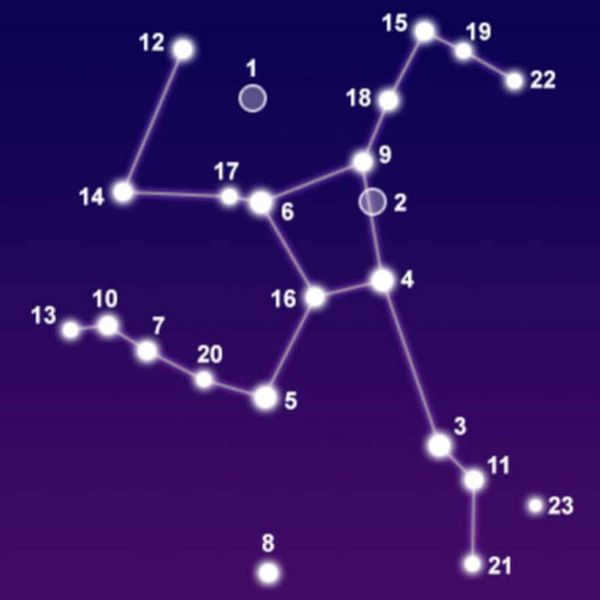
These constellations in the night sky are incredibly popular and can be viewed without the need for any equipment. They are just a small selection of the countless constellations that exist.
The Zodiacal constellations
It is well-known that a person’s birth is associated with a specific Zodiac sign. Currently, there are 13 constellations that fall into the category of “zodiacal”. These include:
- Aries;
- Taurus;
- Gemini;
- Cancer;
- Leo;
- Virgo;
- Libra;
- Scorpio;
- Serpentine;
- Sagittarius;
- Capricorn;
- Aquarius;
- Pisces.
Everyone is familiar with the 12 signs of the Zodiac, but the Serpentine is a more recent addition. However, have you ever wondered how these well-known constellations came to be?
The first star chart was discovered in a cave in France, where a depiction of the sky adorned the cave walls, complete with recognizable constellations, including those of the Zodiac.
Stars serve as markers for the changing of the seasons, which is why certain constellations can only be seen during specific times of the year. This phenomenon is also true for the zodiacal groups of stars. For instance, the distinct boundaries of Scorpio can only be observed in late October. In ancient times, people could determine the month based on the position of these constellations.
Constellations that are visible during different seasons
As you may be aware, not all constellations can be observed at any given time. Some are best seen in winter, while others are more prominent in summer. Here are the constellations that can be observed during the spring season:
- Cancer
- Canis Minor
- Carina
- Lynx
- Puppis
- Pyxis
- Vela
- Volans
- Puppis
- Chamaeleon
- Canes Venatici
- Virgo
- Musca
- Crater
When it comes to the summer season, the following constellations are well visible:
- Vulpecula
- Circinus
- Lupus
- Draco
- Hercules
- Triangulum
- Sagittarius
- Telescopium
- Aquila
- Capricornus
- Cygnus
- Aquarius
- Grus
- Toucan;
- Fish.
In the winter months, however, you have the opportunity to observe:
- Aries;
- Whale;
- Clock;
- The Cutter;
- Orion;
- Taurus;
- Giraffe;
- Hare;
- Unicorn.
There are a total of 88 officially registered constellations, each of which can be viewed during a specific time period. Therefore, if you want to see a particular celestial constellation, you need to gather information about it and determine the time of year and day when it can be observed.
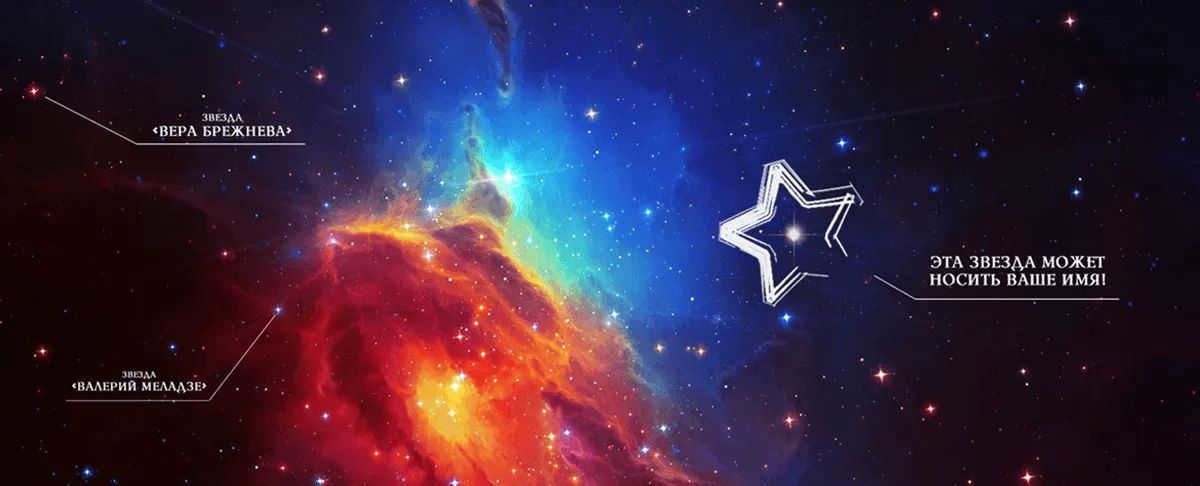

Among the 88 constellations, there are some very melodic ones, such as Bird of Paradise, Virgo, Goldfish, Eagle, Dragon, Sex, and Unicorn.
12 ZODIAC SIGNS
- Aries
- Taurus
- Gemini
- Cancer
- Leo
- Virgo
- Libra
- Scorpio
- Sagittarius
- Capricorn
- Aquarius
- Pisces
- March 21 – April 20
- April 21 – May 21
- May 22 – June 21
- June 22 – July 22
- July 23 – August 21
- August 22 – September 23
- September 24 – October 23
- October 24 – November 22
- November 23 – December 22
- December 23 – January 20
- January 21 – February 19
- February 20 – March 20
Constellations in Russia and CIS
In Russia, all zodiacal constellations are visible in their entirety, with the exception of Scorpio and Sagittarius, which can only be fully seen in the southern regions of Russia and the CIS.
Constellations of the northern hemisphere
⚝ There are a total of 32 constellations in the northern hemisphere: Andromeda, ♊Gemini, Big Dipper, Ascendant, Volopassus, Veronica’s Hair, Hercules, Hound Dogs, Dolphin, Dragon, Giraffe, Cassiopeia, Swan, ♌ Lion, Lyra, Fox, Little Bear, Little Horse, Little Lion, Little Dog, ♈Aries, Pegasus, Perseus, ♋Cancer, ♓Pisces, Lynx, Northern Crown, Arrow, ♉Taurus, Triangle, Cepheus, Lizard.
Constellations of the northern hemisphere that are not visible above the horizon include the Big Dipper, Dragon, Giraffe, Cassiopeia, Little Dipper, Lynx, and Cepheus. These stars can be seen all year round at any time of day. Purchase a star
Equatorial Constellations
These constellations are located on the border between the northern and southern hemispheres:
⚝ There are a total of 9 equatorial constellations: Hydra, ♍Virgo, Unicorn, Serpent, Snake, Whale, Orion, Eagle, and Sextant (Sex)
Constellations in the Southern Hemisphere
⚝ A total of 47 constellations can be found in the Southern Hemisphere. These include Big Dog, ♎ Libra, ♒Aquarius, Wolf, Raven, Dove, Sacrifice, Giraffe, Crane, Hare, Goldfish, Indian, Keel, ♑Capricorn, Compass, Feed, Flying Fish, Microscope, Fly, Pump, Pump, Naugolnik, Octant, Peacock, Sails, Furnace, Bird of Paradise, Chisel, Grid, ♏Scorpio, Sculptor, Table Mountain, ♐Sagittarius, Telescope, Toucan, Phoenix, Chameleon, Centaurus, Circulus, Clock, Bowl, Shield, Eridanus, Southern Hydra, Southern Crown, Southern Fish, Southern Cross, and Southern Triangle.
There are certain constellations in the Southern Hemisphere that are visible all year round, as they are not below the horizon. These constellations include the Flying Fish, Fly, Octanthus, Peacock, Bird of Paradise, Table Mountain, Toucan, Chameleon, Circlet, Southern Hydra, Southern Cross, and Southern Triangle.
WHEN CAN YOU OBSERVE YOUR FAVORITE STAR IN THE SKY
Discover the precise location of constellations in the sky in your specific city – simply search by country, city, date, and time of observation.
Showcase a special star from the constellation that aligns with a person’s birth or was directly above their city at the time of their birth!
If you would like to see the star in the sky during the moment of gift-giving, reserve a star in any of the constellations and then inform us via chat with the reservation number, city, date, and time for observation. Our team of professional astronomers will calculate and inform you which constellations will be visible in the sky at that exact moment. Based on your preference, we can make adjustments to the order.
P.S. The star will be visible at different hours and on different days throughout the years, as the constellations gradually shift across the sky, moving to the right by approximately 2 hours each month!

What is a micro constellation? How are they characterized?
Now, you have the chance to give a name to a MicroStellar in the universe! But don’t wait too long, as this opportunity may soon no longer be available to the general public.
We offer you the opportunity to purchase and name a microstellar, so that the story of your love can be preserved for centuries. It is customary to gift a micro-star on Valentine’s Day (February 14th), on March 8th, to bring families together, or to immortalize your love. Read more.
We can name a star in outer space that will not only be located in a specific constellation, such as the “Big Dipper,” but also in its local area, for example, in the Star Cluster “I am Russian,” or in the Micro constellation of the Football Club “Dynamo.”
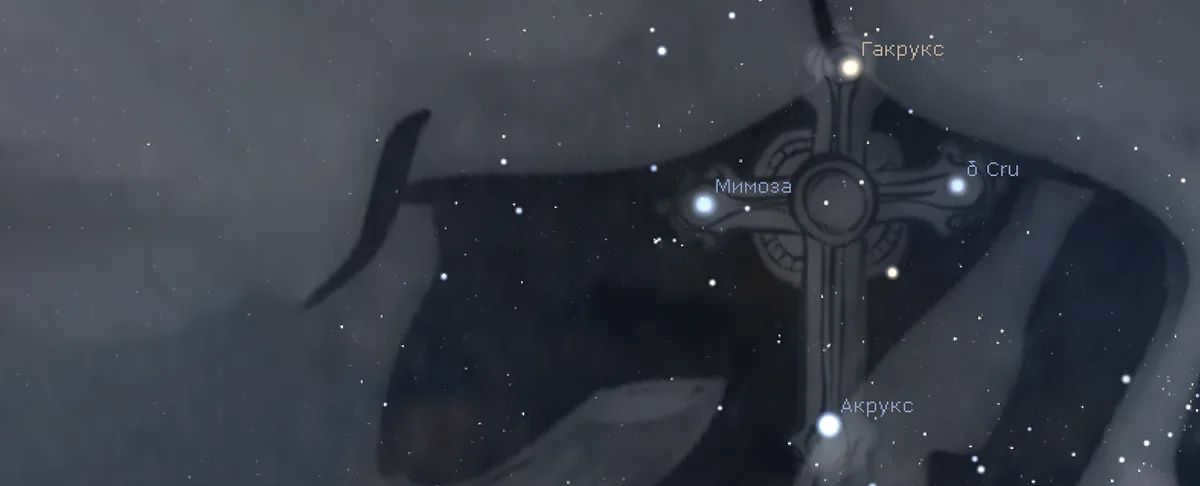
One has the opportunity to purchase a star in outer space, within the constellation that aligns with their religious beliefs or conveys the desired symbolism.
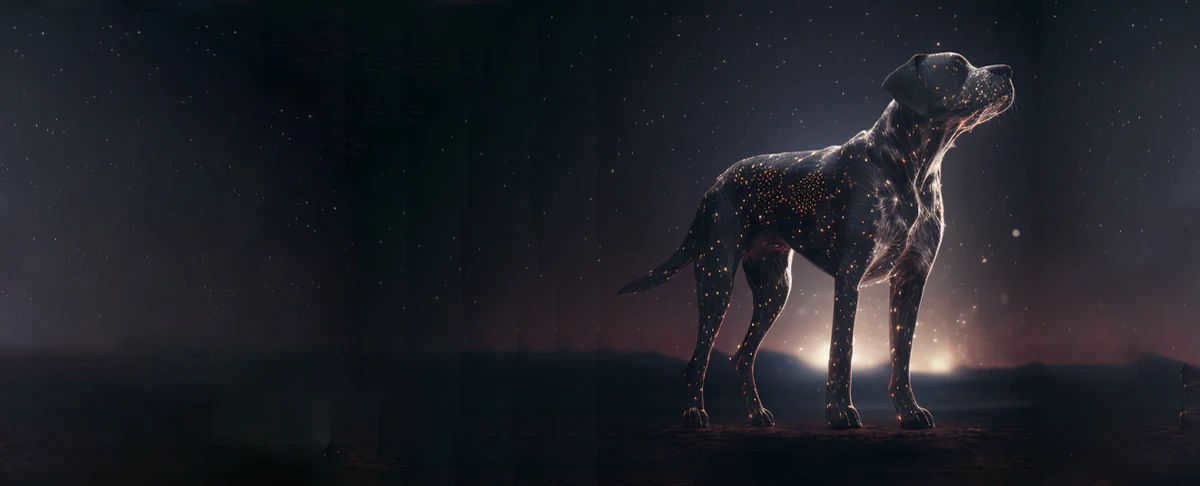
ANIMAL-FRIENDLY CONSTELLATIONS
Constellations that depict animals are perfect for naming a star after your beloved pet.
We have compiled a selection of constellations that are suitable for dogs, cats, birds, fish, horses, and other pets.
Constellations for pets
The boundaries of the zodiacal constellations were officially defined at the Third General Assembly of the International Astronomical Union (IAU) in 1928. This assembly also approved the boundaries of all 88 modern constellations. The following is a list of these constellations.
Any ancient constellations that did not meet the criteria for official constellation status are now referred to as Asterisms.
By the way, the borders of the actual zodiacal constellations do not align with the division of the ecliptic into twelve equal parts that astrology typically uses. This means that the coordinates of the constellations do not correspond with the signs of the zodiac. Additionally, the dates when the Sun enters the zodiacal constellations do not align with the corresponding signs of the zodiac. The Sun can spend anywhere from seven days (in the constellation of Scorpio) to a whole month and sixteen days (in the constellation of Virgo) within the borders of a real constellation.
Andromeda is a constellation located in the northern hemisphere of the sky. It features three 2nd magnitude stars and a spiral galaxy that can be seen with the naked eye. It has been known since the 10th century.
A group of stars in the sky that can be seen in the northern hemisphere is known as a constellation. The Big Dipper is one such constellation, which is formed by seven stars that resemble a ladle with a handle. The two brightest stars in this constellation are called Aliot and Dubhe. By looking at the two outermost stars of the Big Dipper, one can locate Polaris, which is also known as the North Star.
Another constellation that can be seen in the southern hemisphere is Sirius. It is the brightest star in this constellation. The best time to observe this constellation is during the months of December and January. Sirius is located southeast of another constellation called Orion, and it is also partially positioned within the Milky Way.
Libra is a constellation that lies between Scorpio and Virgo in the zodiac. It consists of 83 stars that are visible to the naked eye. However, Libra is one of the least visible constellations in the zodiac, with only five of its stars being brighter than the 4th magnitude. The Sun enters the Libra constellation on October 31.
A vast yet faint constellation of the zodiac situated between Capricorn and Pisces. Aquarius is home to the radiant of the Delta Aquaridae meteor shower, which is active during the latter part of July.
An expansive constellation visible in the Northern Hemisphere of the celestial sphere. It encompasses an area of 386.5 square degrees in the sky. Within this constellation lies the north celestial pole and it offers views of numerous galaxies and clusters.
A zodiacal constellation positioned between Leo and Libra. In modern times, the point of the autumnal equinox falls within the constellation Virgo. The star Spica shines the brightest within this constellation.
A circumpolar constellation found in the Northern Hemisphere of the celestial sphere. It covers an area of 1,083 square degrees in the sky and contains 210 stars that are visible to the naked eye. The north ecliptic pole is situated within Draco.
The Equatorial Constellation covers an expanse of 481.6 square degrees in the celestial sphere and boasts 146 stars that can be seen without the aid of a telescope. While it resides within the Milky Way, it lacks any prominent stars to speak of.
Located in the southern hemisphere, this compact constellation spans an area of 247.7 square degrees in the sky and showcases 49 stars that are visible to the naked eye.
Positioned in the southern hemisphere, the Constellation is only partially observable in Russia, primarily in the southern regions. Its most brilliant star, Alnair, sits approximately 100 light years away. It sits sandwiched between the South Fish to the north and Tucan to the south. It occupies a space of 365.5 square degrees in the night sky and contains 53 stars visible without the aid of a telescope.
This southern hemisphere Constellation occupies 290.3 square degrees in the celestial sphere and exhibits 72 stars that can be seen without the use of a telescope.
There is a constellation located on the equator that covers an area of 636.9 square degrees in the sky. It consists of 106 stars that can be seen without the aid of a telescope. The best time to see this constellation is in the month of June. It is visible from all parts of Russia. What makes this constellation unique is that it is the only one composed of two separate parts that are not connected. These parts are divided by another constellation known as Serpentine. The “Snake’s Head” is located in the northwest, while the “Snake’s Tail” can be found in the east.
There is also a constellation in the southern hemisphere of the sky. It covers an area of 179.2 square degrees and contains 32 stars that can be seen with the naked eye. This constellation is significant because it contains the south pole of the ecliptic.
It’s an unchanging group of stars in the sky’s Northern Hemisphere. In December, the brightest stars in Cassiopeia form a shape that looks like the letter “M,” while in June, they resemble the letter “W.” The constellation covers a space of 598.4 square degrees in the sky and has 150 stars that can be seen without a telescope. The majority of the constellation is located within the Milky Way and has numerous scattered star clusters.
Located in the “water” region of the sky, this constellation can be found in the Southern Hemisphere. It is not far from the constellations Aquarius, Eridanus, and Pisces.
This constellation can be found in the Southern Hemisphere. It covers an area of 220.8 square degrees in the sky and has 43 stars that can be seen without a telescope.
The constellation in the southern hemisphere of the celestial sphere is located within the Milky Way. It covers a region of 673.4 square degrees in the sky and contains 241 stars that can be seen without the need for a telescope.
This constellation can be found in the northern hemisphere of the night sky. Its prominent stars form a distinct cross shape, known as the Northern Cross, which stretches along the Milky Way. In ancient times, this constellation was associated with birds in flight – the Babylonians referred to it as the “bird of the woods,” while the Arabs called it the “chicken.”
Located between the constellations Cancer and Virgo in the northern hemisphere of the celestial sphere, this zodiacal constellation bears a striking resemblance to a reclining lion. Its head and chest form the well-known Sickle asterism, which resembles a mirrored question mark.
The southern hemisphere of the sky is home to a unique constellation. Spanning an impressive 141.4 square degrees, this constellation is adorned with 31 stars that can be seen without the aid of a telescope.
On the other hand, in the northern hemisphere, nestled between Hercules and Swan, lies a small constellation. Its most prominent feature is the dazzling star known as Vega.
Meanwhile, another constellation graces the northern hemisphere, residing within the Summer Triangle. This dimly lit constellation covers a vast area of 268.2 square degrees and boasts an impressive 72 stars that can be observed without any special equipment.
Shining brightly in the Northern Hemisphere, we find a circumpolar constellation. This constellation spans an expansive 255.9 square degrees and is adorned with 40 stars that can be easily seen by the naked eye.
Lastly, a small constellation paints the northern hemisphere with its presence. Spanning an area of 71.6 square degrees, this constellation showcases 14 stars that can be observed without any telescopic assistance.
A group of stars located in the northern part of the sky that forms a specific shape. It covers an area of 232 square degrees and includes a total of 34 stars that can be seen without the use of a telescope.
An impressive constellation that can be found near other constellations such as Gemini, Unicorn, Hydra, and Cancer.
A small constellation situated in the southern part of the sky. It is positioned to the south of Capricorn, to the north of Indian, to the east of Sagittarius, and to the west of South Pisces and Crane. This constellation covers an area of 210 square degrees in the sky and contains 37 stars that are visible to the naked eye.
A constellation located in the southern part of the sky, which can be seen when looking towards the Milky Way and is positioned to the south of the Southern Cross constellation. It covers an area of 138.4 square degrees in the sky and includes a total of 60 stars that can be observed without the need for a telescope.
A group of stars located in the southern hemisphere of the celestial sphere. This particular constellation covers an area measuring approximately 238.9 square degrees and is home to a total of 42 stars that can be seen without the aid of a telescope.
Situated in the southern hemisphere of the sky, this constellation is positioned to the southwest of Scorpius and to the north of the Southern Triangle. It also shares a border with Circulus. Both arms of the Milky Way galaxy pass through this region, although it is not particularly rich in bright stars. With a total of 42 stars visible to the naked eye, this constellation occupies an area measuring approximately 165.3 square degrees in the sky.
One of the most well-known constellations in the zodiac, despite the fact that it does not contain any stars brighter than the second magnitude. The three primary stars in this constellation are Hamal, Sheratan, and Mezarthim.
A faint constellation situated in the southern hemisphere of the sky, which includes the South Pole of the Earth. Covering an area measuring approximately 291.0 square degrees in the sky, this constellation contains a total of 56 stars that can be seen without the use of a telescope.
An equatorial constellation is situated in the eastern branch of the Milky Way, south of the Arrow. Covering an area of 652.5 square degrees, this constellation is easily recognizable by the presence of three blue-white stars representing Orion’s belt.
Within this constellation, there are two zero magnitude stars, five stars of the second magnitude, and four stars of the third magnitude. Additionally, there are variable stars among the brightest ones.
Located in the southern hemisphere of the sky, this constellation has its southern boundary along the richest regions of the Milky Way. With an area of 499.6 square degrees, it showcases 195 stars visible to the naked eye.
Another equatorial constellation can be found southwest of Andromeda. Covering an extensive area of 1,120.8 square degrees, it boasts 166 stars visible to the naked eye.
A group of stars located in the northern part of the celestial sphere, named after the mythological Greek hero who defeated the Gorgon Medusa. This particular constellation is one of the 48 constellations identified by the ancient astronomer Ptolemy. Notable celestial objects within this constellation include the variable star Algol, as well as the radiant point of the annual Perseid meteor shower.
Another constellation can be observed in the southern hemisphere of the sky. Covering a substantial area of 397.5 square degrees, this constellation contains a total of 57 stars that can be seen without the aid of a telescope.
Located near the celestial pole in the southern hemisphere is a constellation that spans an area of 206 square degrees. Within this constellation, there are 20 stars that are visible to the naked eye.
Considered as the most inconspicuous zodiacal constellation, this particular constellation can only be observed on a clear night between the constellations Leo and Gemini.
Another constellation that can be found in the southern hemisphere of the sky. Covering an area of 125 square degrees, this constellation contains a total of 21 stars that can be seen without the aid of a telescope.
A vast astrological grouping situated between Aquarius and Aries. It is commonly split into “northern Pisces” (beneath Andromeda) and “western Pisces” (between Pegasus and Aquarius).
An assemblage of stars in the northern hemisphere of the celestial sphere. It occupies a 545.4 square degree area in the sky and encompasses 92 stars visible to the unaided eye. There are no prominent stars within its boundaries.
A diminutive constellation in the northern hemisphere. The primary stars of the constellation create a semicircular wreath. The most luminous star is known as Gemma.
ASTROLOGICAL BODY IN THE CONSTELLATION SEX.
Select a celestial body in outer space bearing the name of a desired individual, in the Sextans constellation, which is abbreviated as Sex. If desired, we can include the concise name of the constellation on the certificate as well, envisioning how it may appear.
The constellation Sextant (Sex) was first introduced by Jan Hevelius in 1690 and he named it “The Celestial Sextant” after his beloved navigational tool that guides travelers through life, helping them stay on course and reach their desired destinations.
This constellation is a perfect gift for International Sex Day or any other special occasion, especially during sexual holidays. It serves as an iconic symbol of love and is a gift that speaks volumes without the need for words!
To book a star and have control over this subtle detail, simply make a payment and contact us through the chat.
Sextant is an equatorial constellation that covers an area of 313.5 square degrees in the sky. It is home to 34 stars that can be seen with the naked eye.
This constellation is located in the southern hemisphere of the sky. It covers an area of 113.9 square degrees and contains 22 stars that are visible to the naked eye.
A faint constellation that can be seen in the southern hemisphere of the sky. It covers an area of 153.5 square degrees and has 24 stars that are visible to the naked eye. There are no stars in this constellation that are brighter than a 5-star magnitude.
Sagittarius is a constellation that is located between Capricorn and Scorpio. It is part of the zodiac and is associated with the winter solstice point. The center of the Galaxy is also found in Sagittarius, but it is hidden by interstellar dust that is about 30,000 light-years away.
Another dim constellation can be found in both the northern and southern hemispheres of the sky. It covers an area of 251.5 square degrees.
Taurus is a zodiacal constellation that lies between Gemini and Aries, to the northwest of Orion. The brightest stars in Taurus are Aldebaran, El Nath, and Alcyone.
Draco is a constellation that can be seen in the northern hemisphere of the sky. It covers an area of 131.8 square degrees and has 25 stars that are visible to the naked eye.
A cluster of stars located in the southern region of the celestial sphere. Covering an expanse of 131.6 square degrees, this constellation showcases 31 stars that can be seen without the use of a telescope.
This particular constellation, known as Centauri, graces the southern hemisphere of the sky. Notably, it is home to the star closest to our solar system, Proxima Centauri.
An assortment of stars positioned in the Northern Hemisphere of the celestial sphere, this constellation takes on the form of an irregular pentagon. The southern portion of this constellation resides within the Milky Way, spanning an area of 587.8 square degrees of the sky and boasting an impressive 148 stars that are visible to the naked eye.
A petite constellation located in the southern hemisphere of the sky, situated west of the Naugol and Southern Triangle constellations and in close proximity to the star Alpha Centauri.
A faint constellation found in the southern hemisphere of the sky, this region covers an expansive area of 248.9 square degrees and features 35 stars that can be seen without the assistance of a telescope.
A constellation located in the southern hemisphere of the sky, covering an expansive area of 282.4 square degrees and showcasing a remarkable collection of 20 stars that can be observed without the aid of any optical device.
This particular constellation, known as one of the largest among modern constellations, is also found in the southern hemisphere. It encompasses a vast region measuring 1137.9 square degrees and boasts an impressive assemblage of 187 stars that can be seen with the naked eye.
Here we have a constellation situated in the southern hemisphere of the sky. It occupies a substantial area spanning 243 square degrees and harbors 32 stars that can be observed without any optical assistance.
Behold a constellation that can be seen from either the northern or southern hemisphere of the sky. It encompasses a considerable expanse of 245.4 square degrees and is distinguished by its brightest star, Fomalgaut.
Now let us focus on a constellation found exclusively in the southern hemisphere of the sky, which happens to be the smallest constellation by area. It is bounded by the constellations Centaurus and Fly.
A cluster of stars in the southern part of the celestial sphere, situated to the south of the Naugolnik and partially within the Milky Way. Covers approximately 110 square degrees in the sky and includes 32 stars that can be seen without the aid of a telescope.
A group of stars in the northern region of the celestial sphere. Positioned between the Swan and Andromeda constellations. Lacks prominent stars, although its northern section is located within the Milky Way. Occupies an area of approximately 200.7 square degrees in the sky and contains 63 stars that are visible to the naked eye.
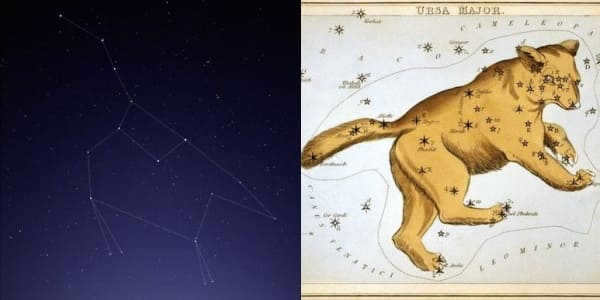
The International Astronomical Union has a compilation of 88 officially acknowledged constellations, a catalog that has been in use since 1922 and encompasses the entire nocturnal firmament across the globe. In Russia, only 54 constellations can be observed.
The constellations listed below are widely recognized and easily observable without the need for visual aids.
10. Draco the Dragon
Dragons are legendary creatures that have been depicted in various cultures throughout history. One of the most famous dragons is Draco, known for its immense size and fiery breath.
Draco is often portrayed as a symbol of power and wisdom. In many myths and legends, it is said that dragons possess immense knowledge and have the ability to bring both destruction and prosperity.
While dragons are typically feared and seen as dangerous, Draco is often seen as a protector and guardian. It is believed that Draco has the power to ward off evil spirits and bring good luck.
Throughout history, Draco has been depicted in various forms of art, literature, and pop culture. Its image has become iconic and is often associated with strength, courage, and mystery.
Whether you believe in the existence of dragons or see them as purely mythical creatures, Draco continues to captivate our imagination and remains an enduring symbol of power and wonder.
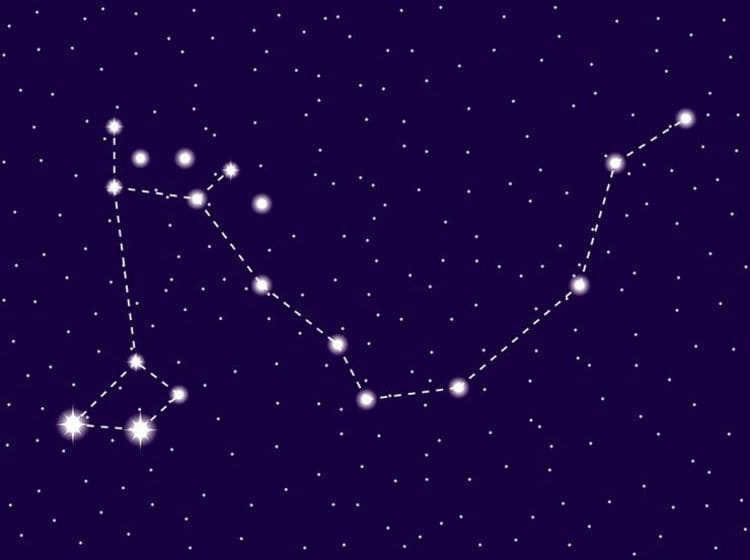
Draco is a constellation of impressive size. Its vast expanse covers 1083 square degrees. Situated in the Northern Hemisphere, between the Big and Little Bears, this constellation can be quite elusive to spot.
The stars that make up Draco are not particularly bright; their light is faint and subtle. In fact, only 80 of them have a magnitude of brightness exceeding 6m.
You can locate Draco in the night sky near the Big Dipper. The curving line that terminates in a quadrangle represents the dragon’s head, while its body extends further. The best time to observe Draco is during the summer and fall months, from May to December.
9. Cepheus
Cepheus, the king of Aethiopia, was known for his wisdom and justice. He ruled over his kingdom with fairness and impartiality. Cepheus was loved and respected by his people, who admired his ability to make wise decisions and solve problems. He was a just and compassionate ruler, always putting the needs of his subjects first. Under his leadership, Aethiopia prospered and thrived. Cepheus was also a loving husband to his wife Cassiopeia and a caring father to their daughter Andromeda. He cherished his family and would do anything to protect them. Cepheus was a symbol of strength and integrity, a true role model for his people.
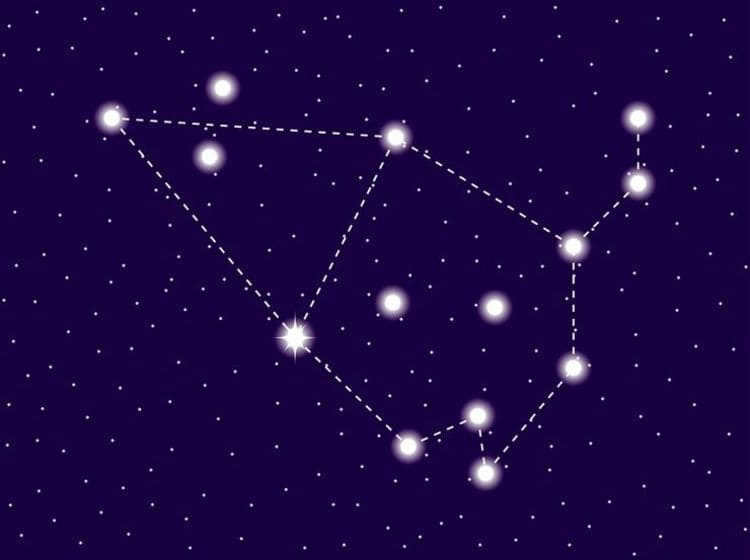
Cepheus is located in the Northern Hemisphere and covers an area of 588 square degrees. There are 148 elements in the constellation, making it a sight to behold. Its shape resembles an irregular pentagon and it can be easily spotted next to the Little Bear.
Cepheus doesn’t have any stars that shine brightly, but it can still be admired throughout the year in the Russian Federation.
Its fame comes from scientific calculations that predict the constellation will eventually move towards the north pole in around a thousand years.
8. Centaurus
Centaurus is an astronomical constellation located in the southern celestial hemisphere. It is one of the largest constellations in the sky, covering an area of about 1060 square degrees. Centaurus is named after the centaur, a mythological creature that is half-human and half-horse.
Centaurus is home to several bright stars, including Alpha Centauri, which is the closest star system to Earth. Alpha Centauri consists of three stars: Alpha Centauri A, Alpha Centauri B, and Proxima Centauri. Proxima Centauri is the closest of the three stars, and is actually the closest known star to our solar system.
In addition to its bright stars, Centaurus is also home to several notable deep sky objects. One of the most famous is Omega Centauri, which is a globular cluster that is visible to the naked eye. Omega Centauri is one of the largest and brightest globular clusters in the Milky Way galaxy.
Centaurus is best seen from the southern hemisphere, as it is located close to the celestial equator. It can be seen from latitudes between +25° and -90°, and is visible all year round.
Overall, Centaurus is a fascinating constellation with a rich history and many interesting objects to observe. Whether you are an amateur astronomer or just have a general interest in the night sky, Centaurus is definitely worth exploring.
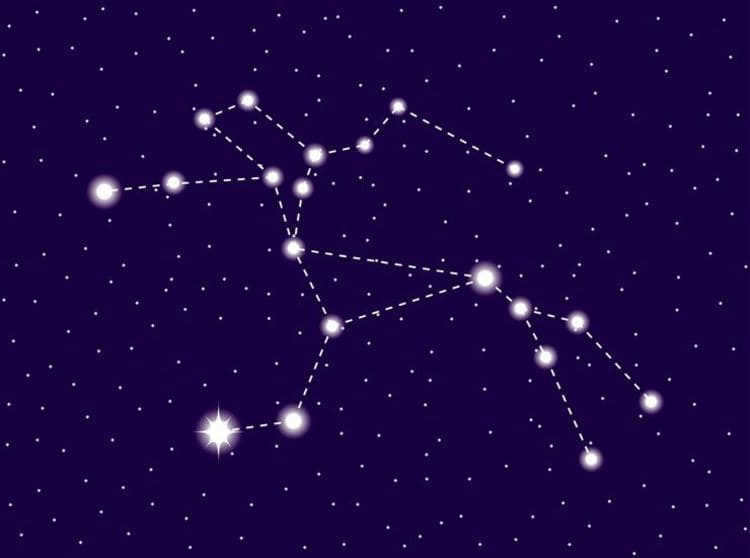
Centaurus is a vast constellation that spans over 1060 square degrees and is home to a multitude of stars. Unfortunately, its beauty remains hidden from the residents of the Northern Hemisphere, who are unable to witness its magnificence.
Situated in the Southern Hemisphere, Centaurus can be found by following a straight line from the Big Dipper to Virgo. In the Russian Federation, there is a secret to catching a glimpse of this constellation: the closer one is to the South, the better the view. However, due to its size and location, residents of the Russian Federation are unable to fully appreciate its grandeur.
The name Centaurus was not chosen randomly, it took inspiration from the centaurs in Greek mythology. One of the most well-known legends tells the story of Chiron, an immortal and wise centaur who ascended to heaven. This name has become quite popular and is often featured in movies and books.
7. Virgo
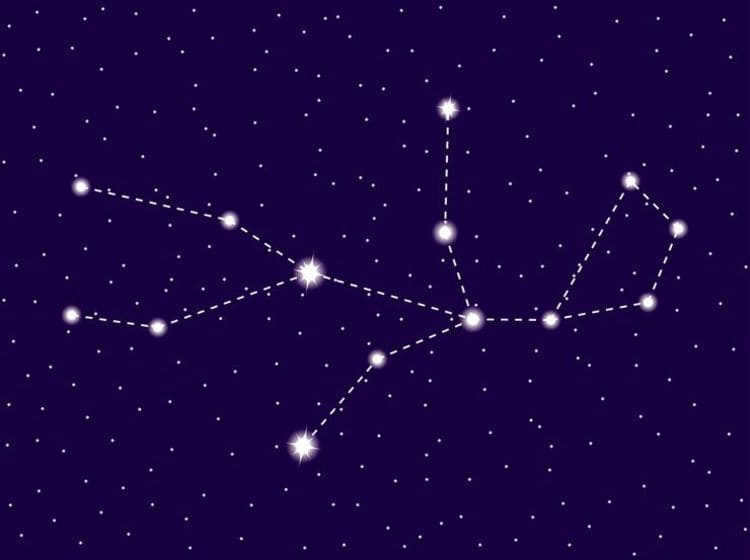
Virgo is the second largest constellation, covering an area of 1,294 square degrees. It is located along the equator, between Leo and Libra. Its significance lies in the fact that the point of the autumnal equinox is situated here.
In ancient atlases, Virgo was depicted as a young girl holding a small ear of wheat. This imagery is not easily recognizable in the night sky for modern viewers, as it requires a vivid imagination and exceptional cognitive abilities.
The star Spica, a first magnitude star and one of the brightest in the sky, serves as a reference point for locating Virgo. The constellation contains a total of 171 stars.
6. Hydra
Hydra is a mythical creature with multiple heads.
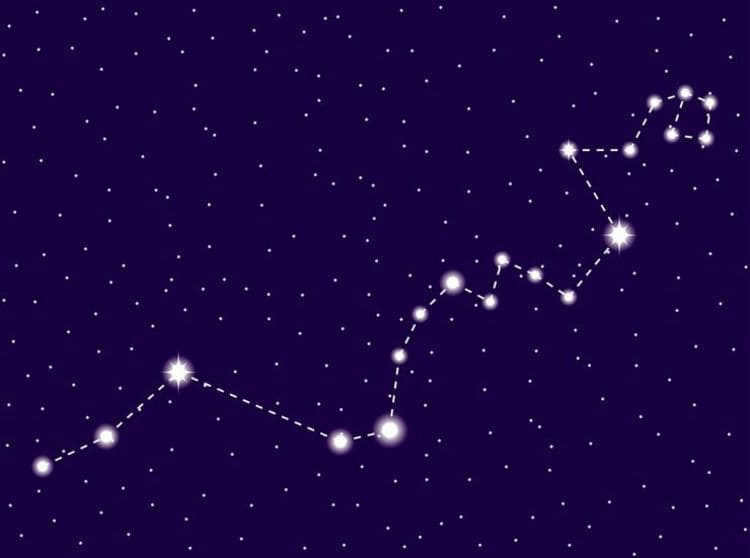
Hydra is the largest constellation in terms of length, covering an area of 1300 square degrees. It is located in the Southern Hemisphere.
In Russia, this constellation can be observed at the end of winter and early spring. However, only residents of cities in the southern part of the country will be able to fully appreciate its beauty. It is possible to see 229 stars with the naked eye, without the need for telescopes or binoculars. However, these stars do not possess a strong or vibrant brightness.
The constellation contains a large number of known stars, including Alpha Hydra, Xi Hydra, Gamma, and numerous small, scattered clusters.
An enraged Apollo threw the Water Serpent, serving as a prime example of his wrath. Another account suggests that Hydra, the arch-nemesis of Heracles, was defeated through the hero’s cleverness and resourcefulness.
5. Cassiopeia.
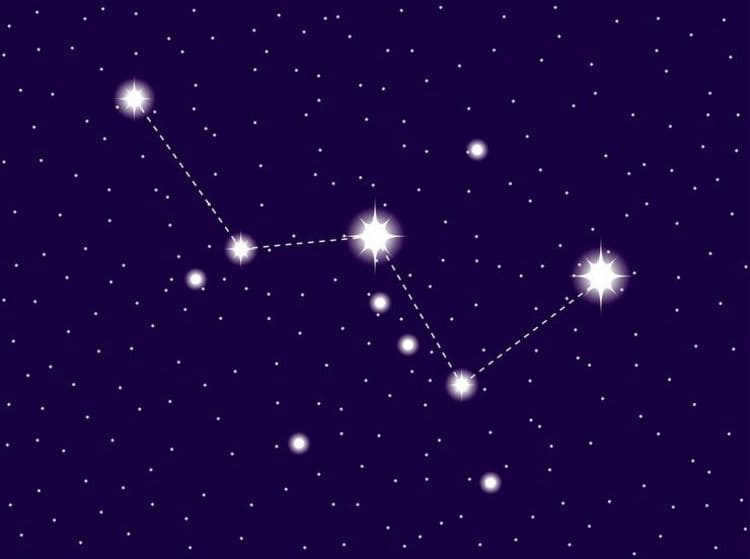
Cassiopeia is situated in the Northern Hemisphere, offering residents of the middle latitudes the opportunity to admire the constellation all year round, with the best visibility in autumn. Resembling the letter W in English, the constellation covers an area of 598 square degrees and features 90 clearly visible stars, with 5 being the largest and brightest.
Its name derives from the wife of King Cepheus and mother of Andromeda. Cassiopeia was known for her excessive pride and was consequently punished by being tied to a revolving throne around a pole. Once a day, Cassiopeia would be upside down, with her head at the bottom.
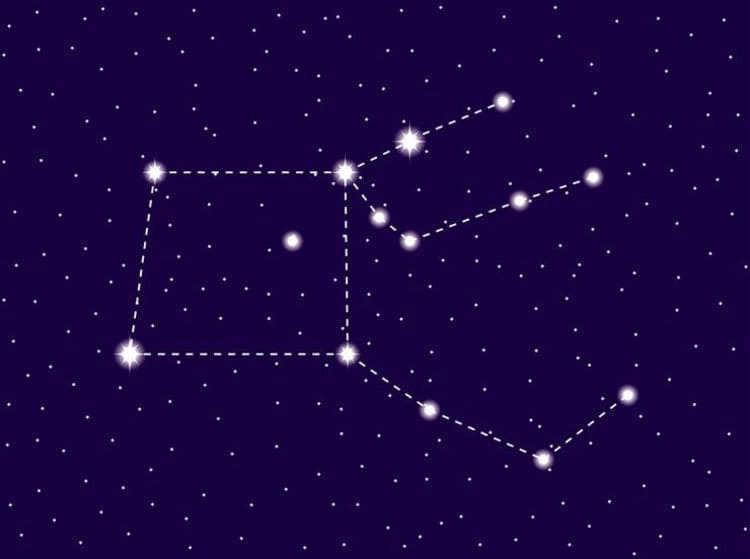
Pegasus, a vast constellation situated in the Northern Hemisphere, covers an impressive area of 1120.8 square degrees. It boasts a total of 166 stars that can be easily observed without the need for specialized instruments. The optimal time to admire Pegasus is towards the end of summer and into the fall season.
Pegasus takes the form of a large square with smaller appendages resembling tentacles, giving it the appearance of a majestic horse for those with a vivid imagination.
According to legend, Pegasus emerged from drops of blood shed by the decapitated Medusa Gorgon, transforming into a magnificent winged horse. In ancient Greek mythology, Pegasus possessed the ability to soar through the clouds with its wings.
3. Hercules
Hercules, also known as Heracles, was a legendary hero in Greek mythology. He was the son of Zeus and Alcmene, a mortal woman. Hercules possessed incredible strength and was known for his many adventures and feats of bravery.
One of Hercules’ most famous feats was his Twelve Labors. These were a series of tasks that were given to him as punishment for killing his wife and children in a fit of madness, which had been caused by the goddess Hera. The tasks included slaying a lion, capturing a boar, and stealing the Golden Apples of the Hesperides.
Hercules was also known for his role in the Trojan War. He fought on the side of the Greeks and played a crucial part in their victory. His strength and bravery were instrumental in defeating the Trojans and bringing an end to the war.
Despite his many accomplishments, Hercules was not without flaws. He was often portrayed as impulsive and prone to anger. His tragic flaw was his lack of self-control, which led to his downfall and eventual death.
Overall, Hercules was a complex and fascinating character in Greek mythology. His incredible strength and heroic deeds have made him a legendary figure that is still celebrated today.
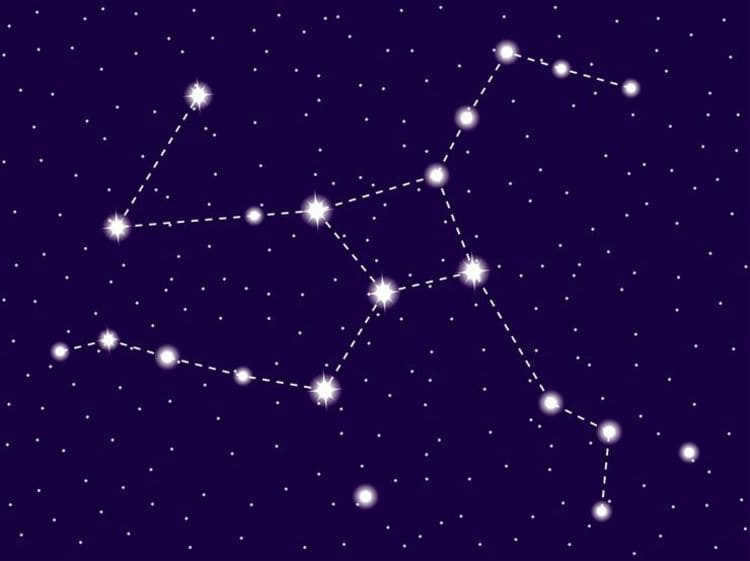
The constellation of Hercules is situated in the Southern Hemisphere and covers an area of 1225 square degrees. This group of stars is easily recognizable and all its elements can be clearly seen. In Russia, it can be fully observed, with the best viewing conditions in June. The shape of Hercules resembles a trapezoid and is easily distinguishable.
Originally, this constellation was named Kneeling. The famous ancient poet Arat described it in his works as a suffering husband, although the reasons for his suffering are unknown and are not mentioned in any available source of information on the subject.
Only in the 5th century BC, the constellation was renamed to Heracles. Later on, it underwent another transformation and became known as Hercules.
2. Ursa Major: the Great Bear.
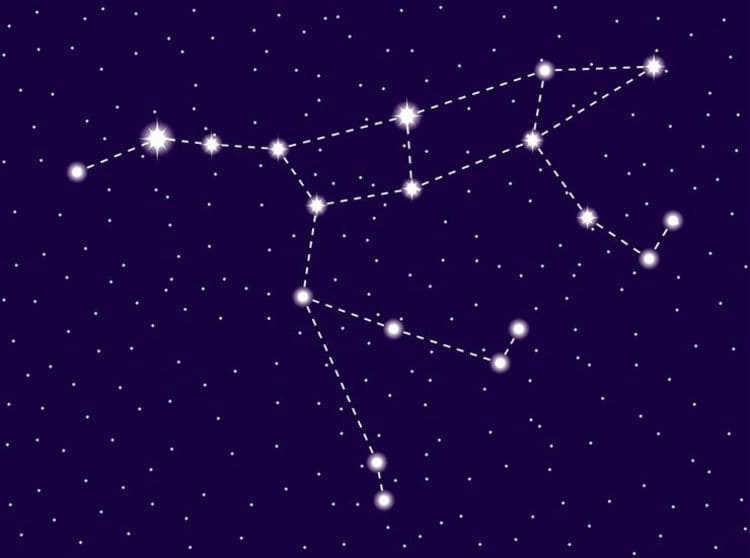
Arguably, the most renowned constellation in the sky can be referred to as the Big Dipper. Its position is in the Northern Hemisphere. Everybody attempted to locate the famous Bucket and undoubtedly succeeded. The area it covers is 1280 square degrees, ranking third in terms of size. Without any instruments, one can observe the 125 stars that compose it.
It is often referred to as an asterism (a clearly visible star group), the Big Bucket, and other, less common names.
The detailed history of its emergence is depicted in ancient Greek myths. The most popular version narrates that Zeus made a decision to rescue the splendid nymph Callisto, who had incurred the wrath of the goddess Hera. In order to save the beauty, Zeus transformed her into a Bear.
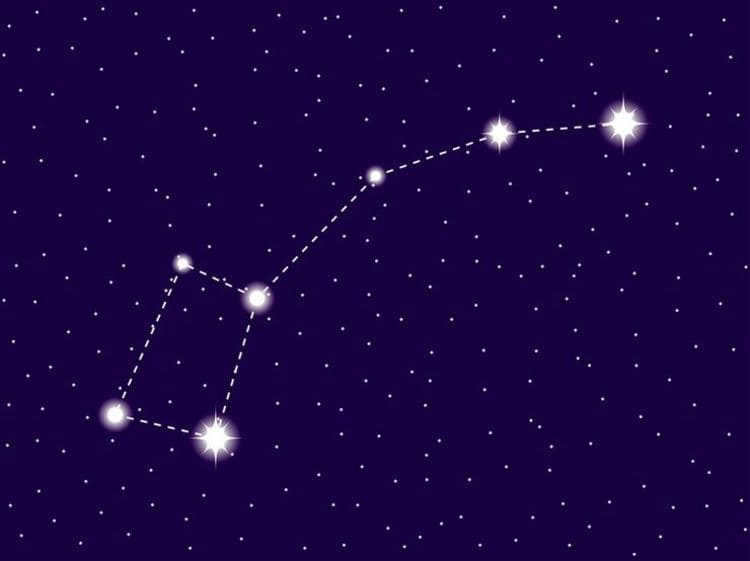
The constellation known as the Little Bear is widely recognized and can be found in the night sky. It is a circumpolar constellation located in the Northern Hemisphere. Spotting this constellation is not a challenging task, as it can be easily located by focusing on the Big Dipper. These two neighboring constellations can be observed throughout the year. Interestingly, the current location of the North Pole is situated within the Little Bear constellation. This group of stars also goes by other well-known names, such as the Little Bucket and the Guardians of the Pole.
According to mythology, the Little Dipper represents the faithful dog of the magnificent nymph Calypso. Both the nymph and her loyal companion were transformed by the mighty Zeus and placed in the heavens. This bestowed upon them eternal life, and now they watch over our planet from high above.
Here are some other suggestions you might enjoy
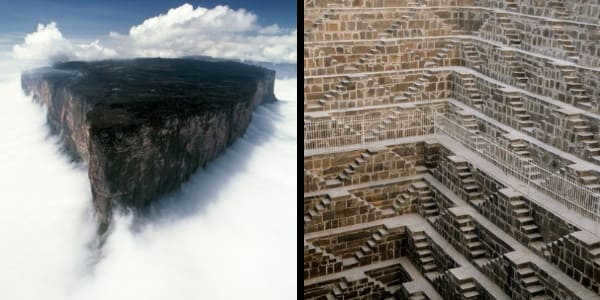

The Coolest Destinations on Earth

October 1, 2020
20+ evidence that autumn is the supreme artist across the globe

12/10/2018
The most fascinating information about the world’s oceans


23/07/2019
10 fascinating facts about the continents


07/07/2019
25 extraordinary trees that bear a resemblance to something different






